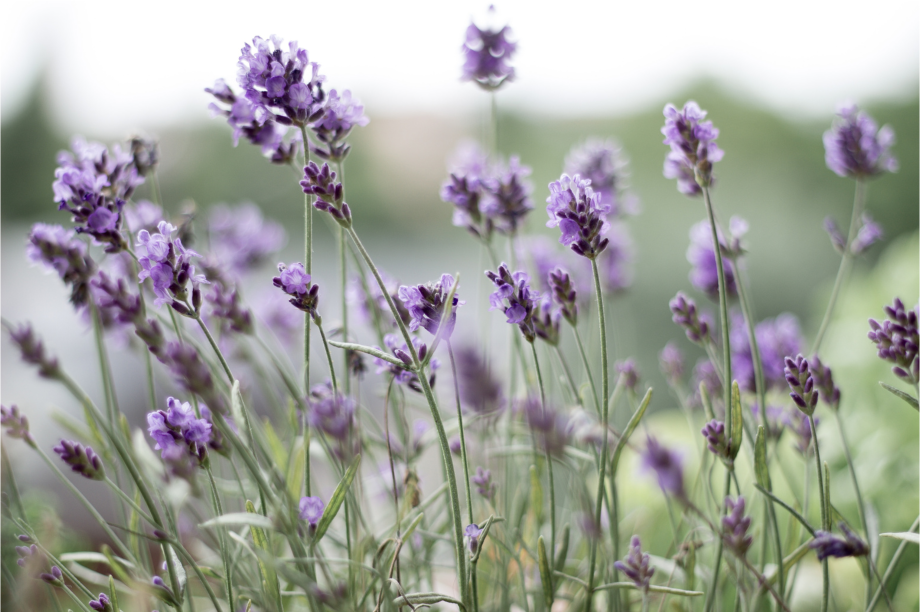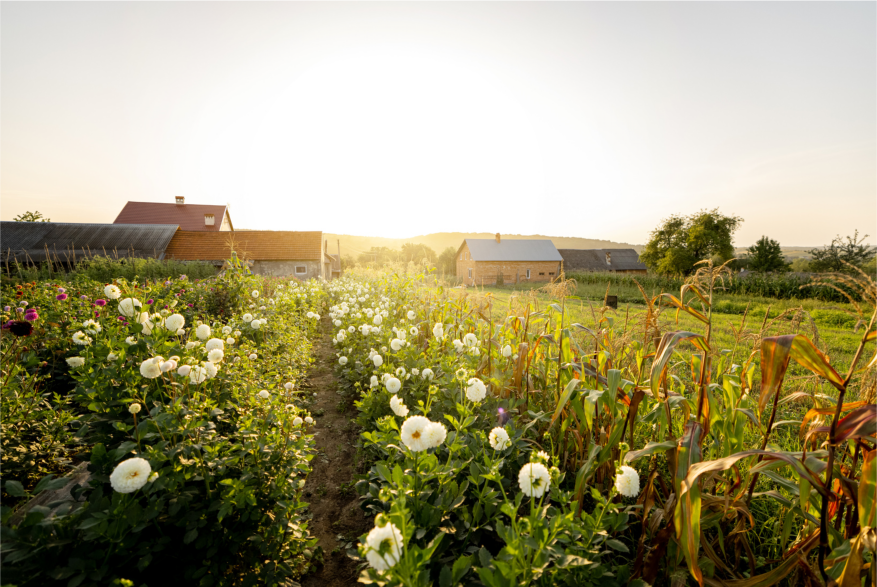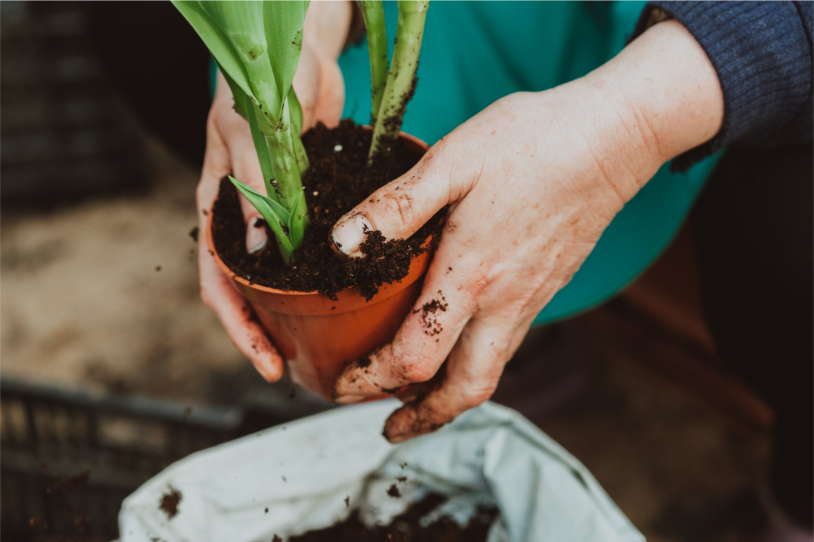Boronia (Boronia spp.)
Boronia, a member of the citrus family Rutaceae, is renowned for its dainty, bell-shaped flowers and aromatic foliage. The flowers come in shades of pink, purple, and white, often accompanied by slender leaves that emit a delightful scent when brushed against. Boronia’s fragrance ranges from sweet and fruity to spicy and earthy, depending on the species.
Several Boronia species are cherished for their fragrance, including Boronia megastigma (Brown Boronia) with its distinct chocolate-like aroma and Boronia heterophylla (Pink Boronia) known for its spicy and floral scent. Other species like Boronia crenulata (Alpine Boronia) and Boronia citriodora (Lemon Boronia) also offer unique fragrances.
Boronias thrive in well-draining, slightly acidic soil. They prefer a sunny to partially shaded location with protection from harsh afternoon sun. Regular pruning after flowering helps maintain their compact shape and encourages new growth. Adequate watering and mulching are essential to prevent the soil from drying out. Be mindful of frost, as some species are sensitive to cold temperatures.
Frangipani (Plumeria spp.)

Frangipani, often referred to as “temple tree” or “lei flower,” boasts a captivating fragrance that is both sweet and tropical. The scent evokes feelings of relaxation and tranquility, making it a beloved choice for gardens and outdoor spaces.
In Australia, various Frangipani varieties with diverse flower colors, including shades of white, yellow, pink, and even red, can be found. Each color variation contributes its unique charm and scent to the landscape.
Frangipani thrives in warm climates with well-drained soil and full sun exposure. Planting in a location with good air circulation helps prevent fungal diseases. While they are relatively low-maintenance, regular watering during the growing season is essential for healthy growth and flower production. As they are deciduous in cooler months, they shed their leaves and enter a period of dormancy, requiring less water during this time.
Native Gardenia (Gardenia spp.)

Native Gardenia, also known as Gardenia augusta or Gardenia Florida, emits an alluring and intense fragrance reminiscent of jasmine and orange blossoms. The scent is especially potent during the evening hours, making it a favorite choice for moonlit gardens.
Native Gardenias thrive in subtropical and tropical regions of Australia, where they can receive adequate sunlight and warmth. They are often found along the eastern coast of the country, from Queensland to northern New South Wales.
These fragrant beauties prefer well-drained, slightly acidic soil enriched with organic matter. Regular watering is crucial, especially during dry periods, to maintain consistent soil moisture. Providing filtered sunlight or partial shade protects the plants from scorching sun and enhances their overall health and fragrance.
Exotic Fragrant Flowers Thriving in Australia
Australia’s diverse climate and favorable growing conditions have made it a welcoming home for a variety of exotic fragrant flowers from around the world. These enchanting blooms bring a touch of international charm to Australian landscapes while infusing the air with captivating scents. Let’s explore some of the exotic fragrant flowers that have found their niche in Australia’s garden tapestry.
Lavender (Lavandula spp.)

Lavender, hailing from the Mediterranean region, has seamlessly adapted to various Australian climates, from the cool southern regions to the warmer northern areas. Its versatility and adaptability make it a beloved choice for gardens across the country.
Lavandula angustifolia (English Lavender) offers a sweet and soothing aroma, while Lavandula x intermedia (Lavandin) exudes a stronger, more herbal scent. Lavender’s scent is known for its calming effects, making it a popular choice for aromatherapy and relaxation.
Apart from its visual and aromatic appeal, Lavender is renowned for its therapeutic properties. The essential oil extracted from Lavender is used in aromatherapy to promote relaxation and alleviate stress. Additionally, Lavender flowers are used to flavor culinary creations, infusing dishes with a delicate floral essence.
Roses (Rosa spp.)

Roses are synonymous with romance, elegance, and beauty. Their captivating fragrance has an unparalleled ability to evoke emotions and memories, making them a cherished addition to Australian gardens.
Some rose varieties are particularly well-suited to Australia’s climate. ‘Double Delight’ captivates with its rich, spicy scent and striking red-and-white petals. ‘Mr. Lincoln boasts deep red blooms and a classic rose fragrance. These varieties, among others, flourish in different regions of Australia.
Pruning is essential for maintaining the health and fragrance of rose bushes. Regular deadheading—removing spent blooms—encourages continuous flowering. Proper pruning techniques, such as cutting above a healthy outward-facing bud, enhance air circulation and sunlight penetration, resulting in vibrant, fragrant blooms.
Sweet Alyssum (Lobularia maritima)

Despite its diminutive size, Sweet Alyssum boasts a charming fragrance reminiscent of honey and fresh flowers. Its delicate scent fills the air and attracts pollinators, making it a valuable addition to gardens.
Sweet Alyssum’s low-growing habit and fragrant blooms make it an excellent choice for ground cover, particularly in garden borders, pathways, or containers. Its compatibility with other plants adds versatility to garden design.
Sweet Alyssum thrives in cooler months and is often used as a cool-season annual. Planting it in early spring or autumn ensures optimal growth and abundant flowering. Adequate sunlight and well-draining soil contribute to its overall success in Australian gardens.
Cultivating and Caring for Fragrant Flowers

Choosing the Right Location
Selecting the ideal location for planting fragrant flowers is a fundamental step in ensuring their successful growth and maximum fragrance production. The right placement takes into account factors such as sunlight, shelter, and microclimates, all of which play a pivotal role in creating a thriving and aromatic garden.
Importance of Sunlight and Shelter
- Sunlight: Adequate sunlight is crucial for the growth and blooming of fragrant flowers. Most flowering plants require at least 6 hours of direct sunlight per day to develop strong stems, vibrant foliage, and abundant blossoms. Observe your garden throughout the day to identify areas that receive the optimal amount of sunlight. South-facing or west-facing locations often receive the right balance of sunlight without exposing plants to excessive heat.
- Shelter: Providing shelter from harsh winds and extreme weather conditions is essential, especially in regions prone to strong gusts. Wind can damage delicate flower petals, hinder pollination, and even uproot young plants. Plant fragrant flowers near fences, walls, or larger shrubs that can serve as natural windbreaks. This not only protects the flowers but also helps trap their fragrance, enhancing your garden’s aromatic experience.
Soil Preferences and Drainage Considerations

- Soil Type: Different fragrant flowers have specific soil preferences. Research the soil requirements of the flowers you intend to plant and choose a location with soil that matches their needs. For example, Lavender thrives in well-draining, sandy or loamy soil with a slightly alkaline to neutral pH, while Roses often prefer slightly acidic soil.
- Drainage: Proper drainage is essential to prevent waterlogged soil, which can lead to root rot and other fungal diseases. Avoid planting in areas with poor drainage, such as low-lying spots where water tends to accumulate. If your chosen location has less-than-ideal drainage, consider amending the soil with organic matter or creating raised beds to improve drainage.
Creating Microclimates for Specific Flowers
Microclimates are small-scale climate variations within a larger area, often influenced by factors like sunlight, wind, and nearby structures. Take advantage of microclimates to cater to the specific needs of different fragrant flowers. For instance, if you’re growing a plant that requires more warmth, consider planting it against a south-facing wall that absorbs and radiates heat.
Structures such as pergolas, trellises, and arbors can not only add architectural interest to your garden but also create favorable microclimates. Vining fragrant flowers like Jasmine or Honeysuckle can be trained to grow along these structures, benefiting from the support and capturing sunlight and warmth.
Planting Techniques

Successful cultivation of fragrant flowers begins with proper planting techniques. Whether you’re sowing seeds, propagating through cuttings or division, or opting for container gardening, understanding the nuances of each method is essential for fostering healthy growth and maximizing fragrance.
Tips for Successful Seed Sowing
- Seed Selection: Choose high-quality seeds from reputable sources to ensure healthy and vigorous plants. Some fragrant flowers, like Sweet Alyssum and Lavender, can be grown from seeds.
- Timing: Follow the recommended planting time for each flower species. In general, spring and early autumn are ideal for sowing seeds, as the milder temperatures and increased sunlight promote germination and early growth.
- Soil Preparation: Prepare the soil by loosening it with a garden fork or tiller. Remove weeds and debris to create a clean planting bed. Mixing in compost or well-rotted organic matter improves soil structure and nutrient content.
- Sowing Depth and Spacing: Follow the seed packet instructions for sowing depth and spacing. Planting seeds too deep can inhibit germination, while overcrowding can lead to competition for nutrients and space.
- Watering: Keep the soil consistently moist during the germination period. Use a fine mist or a gentle spray to prevent dislodging the seeds. Once seedlings emerge, gradually reduce the watering frequency to encourage deep root growth.
Propagation Methods: Cuttings, Division, Grafting
- Cuttings: Many fragrant flowers, including Native Gardenia and some Roses, can be propagated through cuttings. Choose healthy, non-flowering stems and remove any leaves from the lower portion. Dip the cut end in rooting hormone and plant it in a well-draining potting mix. Maintain high humidity and bright, indirect light to encourage rooting.
- Division: Propagating through division involves separating a mature plant into smaller sections, each with roots and shoots. This method is suitable for plants that naturally form clumps, such as Boronia. Gently dig up the plant, divide it into sections, and replant each section in prepared soil.
- Grafting: Grafting involves joining the stem of one plant (the scion) onto the rootstock of another plant. This technique is commonly used for Roses to produce specific varieties. Skilled grafting ensures the compatibility of scion and rootstock, resulting in a stronger and more fragrant plant.
Container Gardening for Fragrant Flowers
- Choosing Containers: Select containers that provide adequate space for root growth and allow for proper drainage. Terracotta or plastic pots are popular choices. Larger containers can accommodate multiple plants or even a combination of fragrant flowers and herbs.
- Soil and Drainage: Use a well-draining potting mix suited for the specific flower species. Ensure the container has drainage holes to prevent waterlogged soil, which can lead to root rot.
- Placement: Position containers in areas that receive the recommended amount of sunlight for the selected fragrant flowers. Container plants can be moved to capture optimal sunlight throughout the day.
- Watering and Fertilizing: Container plants require more frequent watering than those in the ground, as pots tend to dry out faster. Monitor soil moisture and adjust watering accordingly. Fertilize container plants with a balanced liquid fertilizer according to the package instructions.
Maintenance and Pruning

Regular maintenance is key to prolonging the blooming period and enhancing the fragrance of your flowers. Deadheading, the process of removing spent blooms, encourages new flower growth and prolongs the flowering season. Pruning techniques vary among different flower species but generally involve removing dead or overgrown branches to improve air circulation and promote healthy growth. Fertilization and soil enrichment are also crucial aspects of care, ensuring that your fragrant blooms receive the nutrients they need to flourish.
Conclusion

Incorporating fragrant flowers into your Australian garden or landscape design is a captivating way to elevate your outdoor space with a symphony of scents. Whether you’re drawn to the native beauty of Boronia or the exotic allure of Lavender, each bloom contributes its unique fragrance to the tapestry of nature.
The careful interplay of colors, aromas, and textures creates a sensory masterpiece that evolves with the changing seasons. To explore an exquisite collection of fragrant flowers and expertly curated arrangements, we invite you to discover the products and services offered by Bourke’s Florist. Embark on a journey of floral enchantment and explore the possibilities to further enhance your outdoor haven. Visit www.bourkesflorist.com.au to learn more and indulge in the art of botanical elegance. Your garden deserves nothing less than the extraordinary.
FAQs
Q: What are some fragrant flowers suitable for small urban gardens in Australia?
For compact urban spaces in Australia, consider growing fragrant flowers like Sweet Alyssum, Lavender (dwarf varieties), and miniature Roses. These plants are well-suited to containers and small garden beds, adding fragrance and charm to limited spaces.
Q: How can I preserve the fragrance of flowers for indoor arrangements?
To preserve the fragrance of flowers for indoor arrangements, harvest them during the early morning or late evening when their scent is most potent. Place them in clean water and keep them away from direct sunlight and heat. Change the water regularly and consider adding floral preservatives to the vase.
Q: Are there fragrant flowers that are also drought-tolerant in Australia?
Yes, some fragrant flowers are well-adapted to drought conditions in Australia. Lavender, Rosemary (Rosmarinus officinalis), and Kangaroo Paw (Anigozanthos spp.) are examples of fragrant and drought-tolerant options that can thrive in arid regions.
Q: When is the best time to plant fragrant flower seeds in different regions of Australia?
The timing for planting fragrant flower seeds varies across different regions of Australia. Generally, spring and early autumn are favorable for sowing seeds, as the weather is milder and more conducive to germination. It’s advisable to consult local gardening resources or experts to determine the best planting times for your specific location.





















